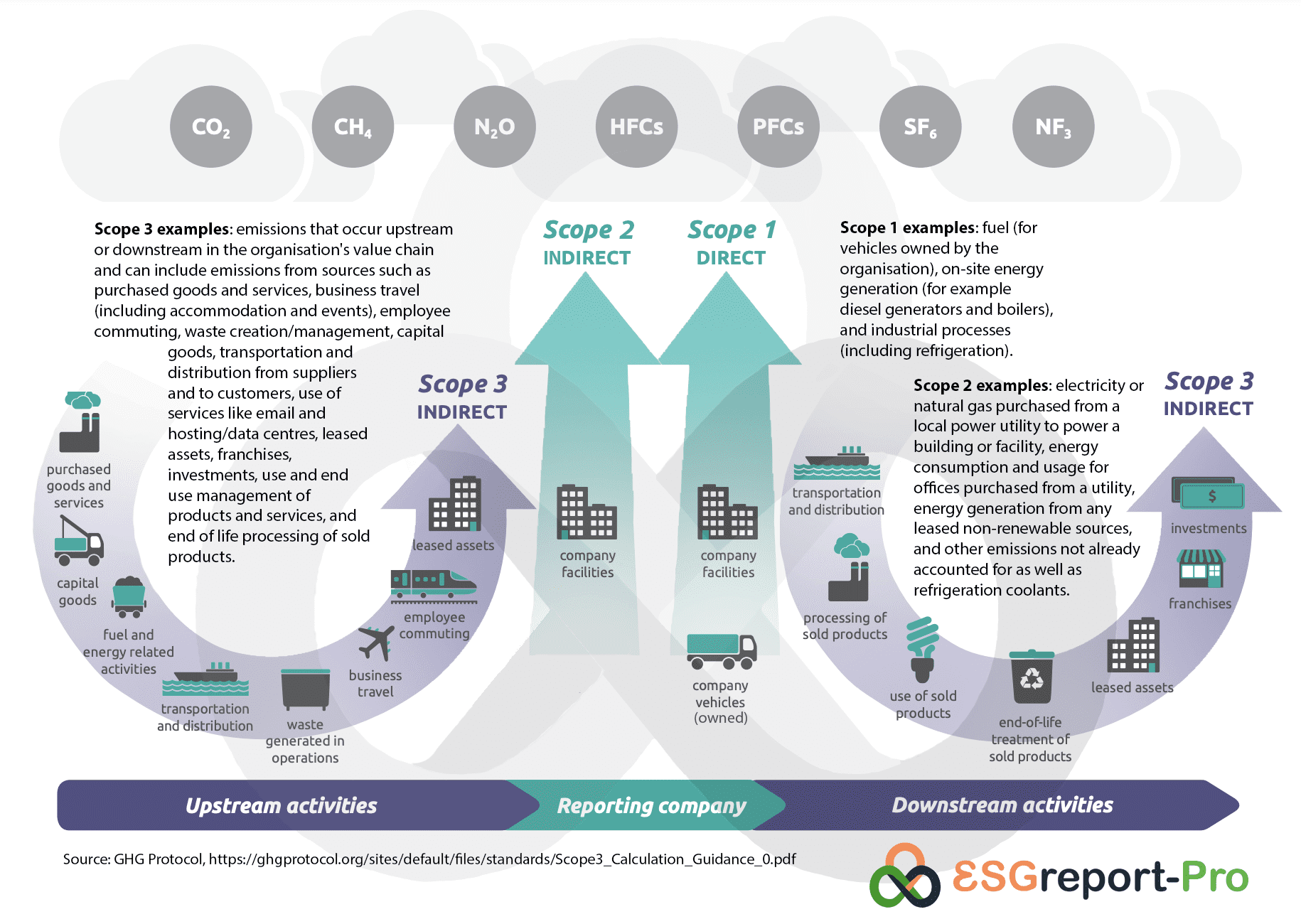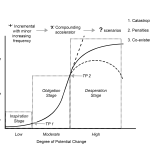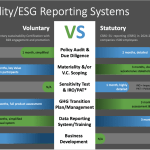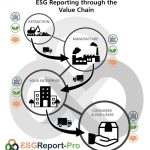ESG - THE BASICS
CO2, GHG Scopes and Transition Plans
Carbon scopes, often referred to as the “three scopes of carbon emissions,” provide a structured approach for organisations to assess and manage their carbon footprint...

Scope 1 Emissions
Represent direct GHG emissions that occur from sources owned or controlled by an organisation. These emissions typically include on-site combustion of fossil fuels, for example fuel (for vehicles owned by the organisation), on-site energy generation (for example diesel generators and boilers), and industrial processes (including refrigeration). Scope 1 emissions are considered the most direct and tangible emissions for an organisation to measure and manage
Scope 2 Emissions
Refer to indirect GHG emissions resulting from purchased energy for own use for example, electricity or natural gas that’s purchased from a local power utility to power a building or facility, energy consumption and usage for offices and sites that’s purchased from a utility, energy generation from any leased non-renewable sources, and other purchased emissions from rented or leased equipment not already accounted for in sites and facilities as well as refrigeration coolants. These emissions occur outside of an organisation’s direct control but are associated with the organisation’s activities. Scope 2 emissions are often measured by calculating the emissions factors associated with the purchased energy sources and the amount of energy consumed.
Scope 3 Emissions
Encompass all other indirect GHG emissions that occur as a result of an organisation’s activities but are not classified as Scope 1 or Scope 2. These emissions occur upstream or downstream in the organisation’s value chain and can include emissions from sources such as purchased goods and services, business travel (including accommodation and events), employee commuting, waste creation/management, capital goods, transportation and distribution from suppliers and to customers, use of services like email and hosting/data centres, leased assets, franchises, investments, use and end use management of products and services, and end of life processing of sold products. Scope 3 emissions are typically the most significant in terms of overall carbon footprint but can be challenging to measure and manage.
By considering all three scopes, organisations can gain a comprehensive understanding of their carbon emissions and identify areas where emissions reductions can be made. This framework helps businesses develop effective carbon management strategies, set emission reduction targets, and report their environmental performance accurately.
HOW TO IDENTIFY SCOPE 1, 2 and 3 EMISSIONS?
Carbon scopes, often referred to as the "three scopes of carbon emissions," are a framework established by the Greenhouse Gas Protocol to categorise and measure greenhouse gas (GHG) emissions.

OK, SO LET'S TALK ABOUT TRANSITION PLANNING
HOW TO BEGIN, WHAT TO DO AND HOW DOES TRANSITION PLANNING WORK?
This is a big question, so we’ll go slowly. Emission transition planning is another way of saying you have a plan to reduce your carbon and GHG emissions. The goal is to be able to create a TRANSITION PLAN that outlines the steps you are going to take to reduce your GHG emissions to zero, or as close as you can realistically get.
In very simple terms, it involves 4 steps:

STEP 1: Make a GHG Inventory
STEP 2: Set a Baseline Year
STEP 3: Set Some Targets
STEP 4: Develop M&A System
First, complete a full GHG inventory – that means detailing all activities that your organisation does internally and externally that potentially contributes to global warming, you also need to identify the dependencies and impacts of these activities on your operations and assess if there are any risks or opportunities associated with each one.
Second, set a baseline year for your carbon and other GHG emissions that you will use to compare your progress in reducing emissions in the future. Many companies choose 2019 or 2020, but it can be any year since 2015 that you have complete records for all of the activities identified in making your inventory.
Third, set some targets – by how much do you plan to reduce your emissions? And then comes the big question – how will you do it? This is actually what the Transition Plan is all about and it can get complicated very quickly, especially as you also need to budget for each activity and set up reporting systems. An added complication can be choosing an appropriate mitigation pathway approach, but for nearly all companies the most straightforward and internationally recognised is the Absolute Contraction Approach (ACA).
Finally, you need to develop a monitoring and tracking process to report all of this and ensure that all stakeholders are being included in the process… that can be quite a daunting process as it often involves your customers, your own workforce and your whole supply chain.




